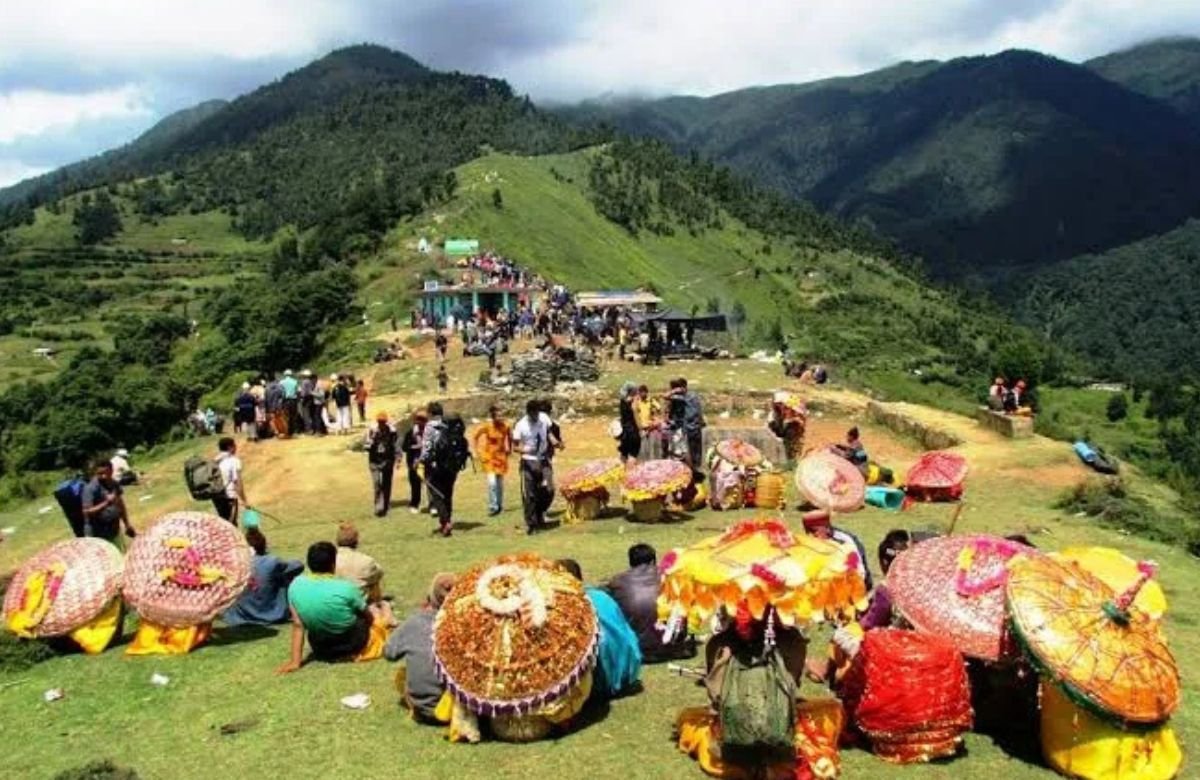Nanda Devi Raj Jat Yatra 2026 — Date, Route, Significance & Complete Details

Get in touch with our Staff members and get discounted offers for your trip.


The Nanda Devi Raj Jat Yatra is one of the most sacred and grand Himalayan pilgrimages of India, celebrated in reverence to Goddess Nanda Devi, the presiding deity of Uttarakhand. This rare and spiritually profound journey is held once every twelve years, drawing thousands of devotees, sages, and travelers from across the world. The next Nanda Devi Raj Jat Yatra is expected to be organized in 2026, following the traditional twelve-year cycle after the last Yatra held in 2014.
The Nanda Devi Raj Jat Yatra traditionally begins in the Hindu month of Bhadrapada (August–September), coinciding with Nanda Ashtami. For 2026, the Yatra is tentatively scheduled between the last week of August and mid-September 2026. Preparations by the local administration and temple committees in Chamoli district have already begun, focusing on infrastructure, safety, and pilgrim facilities.
The Yatra spans around 19 to 22 days, covering rugged Himalayan terrain, high passes, deep valleys, and remote villages that come alive with traditional rituals and festivities during this sacred journey.
The pilgrimage starts from Nauti Village, near Karnaprayag, considered the maternal home of Goddess Nanda Devi. From there, the divine procession carrying the Doli (palanquin) of the Goddess travels through dozens of villages and sacred meadows (bugyals) before culminating at Homkund, a glacial lake near Roopkund at an altitude of about 5,000 meters.
Major halts along the route include:
Nauti
Kanswa
Sem
Koti
Bhagoti
Lohajang Pass
Wan
Bedni Bugyal
Patar Nachauni
Roopkund
Homkund
The entire journey covers approximately 280 kilometers, mostly on foot, through breathtaking yet challenging Himalayan landscapes. Devotees, monks, and villagers walk together, carrying offerings and singing devotional hymns in praise of Maa Nanda.
The Nanda Devi Raj Jat Yatra has roots dating back several centuries. It symbolizes the farewell journey of Goddess Nanda Devi as she departs from her maternal home (Kumaon-Garhwal region) to her divine abode in the Himalayas. Ancient folklore connects this ritual to the Katyuri kings, who initiated the procession to honor the Goddess as the protector of their kingdom.
Over time, this tradition evolved into a grand spiritual event uniting numerous Himalayan communities. Despite the hardships of terrain and weather, devotees have continued to preserve this pilgrimage, blending mythology, faith, and cultural pride.
According to legend, Nanda Devi, the daughter of the Himalayas, was married to Lord Shiva of Kailash. The Raj Jat Yatra marks her journey to her husband’s abode. Symbolically, it is both a farewell and a reunion — a celebration of divine love and sacrifice.
A unique feature of the Yatra is the presence of a four-horned ram (Chausingya Khadu). The ram is believed to be chosen by the Goddess herself. It leads the procession throughout the journey and, in the final ritual at Homkund, disappears into the snow-clad mountains — symbolizing the Goddess reaching Kailash.
The Nanda Devi Raj Jat Yatra is not just a religious procession but a living cultural heritage of Uttarakhand. It unites the Garhwal and Kumaon regions in devotion, song, dance, and ritual. The event showcases traditional costumes, folk music, regional cuisines, and sacred chants that echo through the valleys.
Villagers offer shelter, food, and blessings to the pilgrims, turning the entire route into a corridor of devotion. The Yatra embodies deep Himalayan spirituality — a blend of divine faith and human endurance.
Before the Yatra begins, elaborate rituals are performed in Nauti Village, including the invocation of Nanda Devi. The Doli of the Goddess is decorated with flowers, ornaments, and sacred offerings. Devotees carry it along with hundreds of other smaller palanquins from different villages.
At each halt, priests conduct pujas, bhajans, and havans. Traditional folk dances (Chanchari and Jagar) are performed at night, narrating tales of the Goddess. When the procession reaches Homkund, the final offering (Bali) is made — typically of a symbolic goat and other sacred items — marking the culmination of the divine journey.
The Yatra is physically demanding. Pilgrims traverse steep mountain paths, cross rivers, and climb to altitudes above 16,000 feet. Weather conditions can shift dramatically, with sudden rain or snowfall. Despite the difficulties, devotees consider it a blessing to complete even part of the journey.
Participants are advised to:
Begin physical fitness training months in advance.
Carry warm clothing, rain gear, and sturdy trekking shoes.
Acclimatize gradually to avoid altitude sickness.
Travel with registered Yatra groups for guidance and safety.
Respect local traditions, environment, and rituals throughout the journey.
For 2026, authorities are expected to deploy modern facilities such as:
Digital tracking systems for monitoring pilgrim movement.
Medical aid camps and mobile health units.
Communication towers and rescue teams in remote stretches.
Eco-friendly arrangements to maintain the fragile mountain environment.
These steps aim to make the Yatra safer and more accessible while preserving its authenticity.
Participating in the Nanda Devi Raj Jat Yatra is not merely a religious act — it’s a journey of the soul. The camaraderie of thousands walking together, the echo of drums and chants, and the sight of the Goddess’s Doli moving through the misty mountains evoke deep emotion and devotion. Many pilgrims describe it as a transformative experience — one that connects them with nature, divinity, and self-discovery.
The Nanda Devi Raj Jat Yatra 2026 is set to be one of the most anticipated spiritual events of the decade. As Goddess Nanda Devi embarks on her celestial journey, devotees will once again retrace the ancient trail through sacred meadows, glaciers, and villages that have kept this tradition alive for centuries.
If you’ve ever dreamt of witnessing or participating in a living Himalayan legend — 2026 is your moment. Prepare early, respect the mountain’s sanctity, and embrace the divine rhythm of this once-in-a-lifetime pilgrimage.